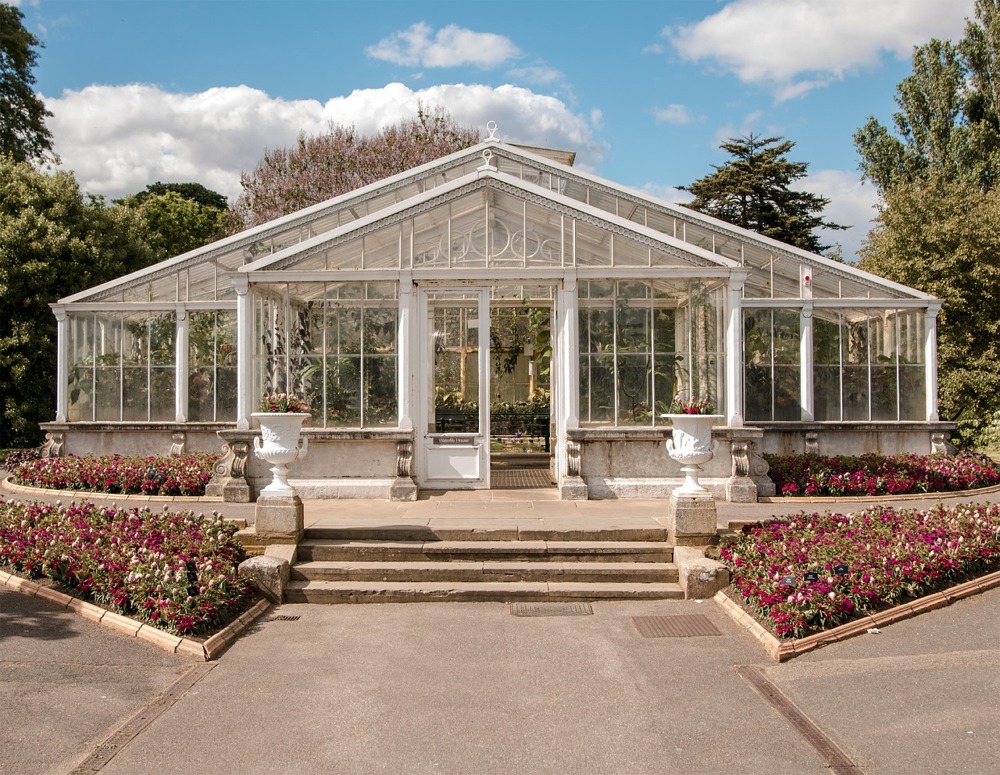Waterlily House
Home > Photos from England > London Gallery 1 > Waterlily House Royal Botanic Gardens Kew

There was nothing more fitting for this beautiful image of the Waterlily House at the Royal Botanic Gardens Kew in London, England, than a lovely sunny day in the summer.
Waterlily House - Royal Botanic Gardens Kew
The Waterlily House is a Victorian-style greenhouse located within the Royal Botanic Gardens Kew in London, England. It was originally built in 1852 and designed by Richard Turner, a prominent Victorian ironworker and greenhouse designer. The Waterlily House was constructed to house Kew's collection of tropical waterlilies, which had been brought back from the Amazon by Victorian explorers.
The structure is made of wrought iron and glass and features a central dome that rises to a height of 66 feet. The dome is supported by elegant cast-iron columns and decorated with ornate tracery. The Waterlily House has a large circular pond in the center, which is home to a diverse collection of water plants, including giant waterlilies, lotus, and other aquatic plants.
The Waterlily House underwent a major restoration in 1994, which included the replacement of the original ironwork and the installation of new heating and ventilation systems. The renovation also added a second pond and improved the display area for the water plants.
Today, the Waterlily House remains one of the most popular attractions at the Royal Botanic Gardens Kew, drawing visitors from all over the world. The greenhouse is open to the public all year round, and visitors can explore the many different species of water plants and learn about the history of the Waterlily House through interactive exhibits and displays.
From Wikipedia
The Waterlily House is the hottest and most humid of the houses at Kew and contains a large pond with varieties of water lily, surrounded by a display of economically important heat-loving plants. It closes during the winter months.
It was built to house Victoria amazonica, the largest of the water lily family Nymphaeaceae. This plant was originally transported to Kew in vials of clean water and arrived in February 1849, after several prior attempts to transport seeds and roots had failed. Although various other members of Nymphaeaceae grew well, the house did not suit the Victoria, purportedly because of a poor ventilation system, and this specimen was moved to another, smaller, house (Victoria amazonica House No. 10).
The ironwork for the Waterlily House project was provided by Richard Turner and the initial construction was completed in 1852. The heat for the house was initially obtained by running a flue from the nearby Palm House but it was later equipped with its own boiler.
From Wikipedia, the free encyclopedia.


